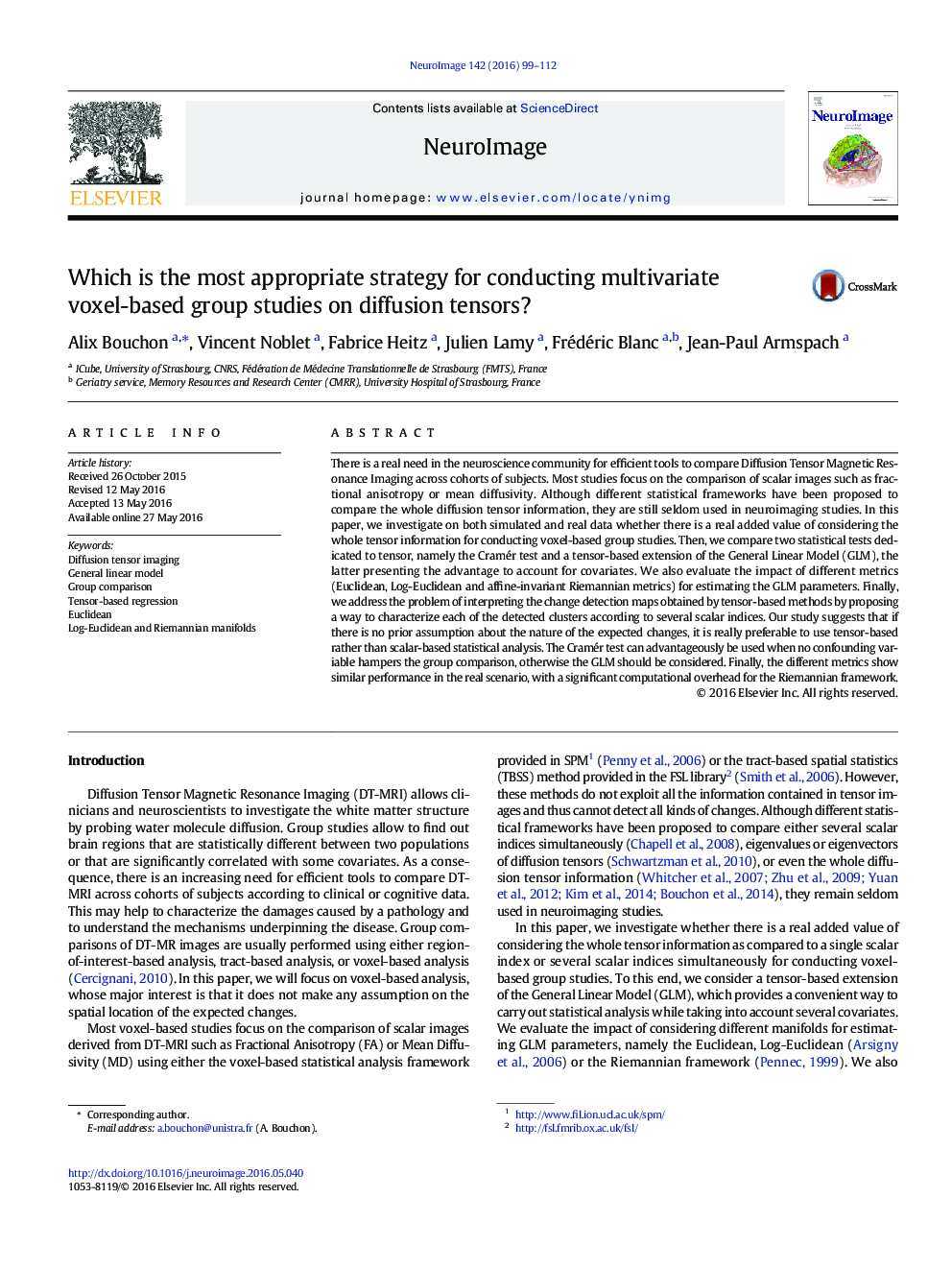| کد مقاله | کد نشریه | سال انتشار | مقاله انگلیسی | نسخه تمام متن |
|---|---|---|---|---|
| 5631422 | 1580866 | 2016 | 14 صفحه PDF | دانلود رایگان |
- Comparison of several strategies for voxel-based group study on diffusion tensors
- Added value of tensor-based over scalar-based statistical tests
- Tensor-based General Linear Model provides an efficient way to account for covariates
- Euclidean, Log-Euclidean and Riemannian manifold show similar performance
- Interpretation of the detections through a characterization procedure
There is a real need in the neuroscience community for efficient tools to compare Diffusion Tensor Magnetic Resonance Imaging across cohorts of subjects. Most studies focus on the comparison of scalar images such as fractional anisotropy or mean diffusivity. Although different statistical frameworks have been proposed to compare the whole diffusion tensor information, they are still seldom used in neuroimaging studies. In this paper, we investigate on both simulated and real data whether there is a real added value of considering the whole tensor information for conducting voxel-based group studies. Then, we compare two statistical tests dedicated to tensor, namely the Cramér test and a tensor-based extension of the General Linear Model (GLM), the latter presenting the advantage to account for covariates. We also evaluate the impact of different metrics (Euclidean, Log-Euclidean and affine-invariant Riemannian metrics) for estimating the GLM parameters. Finally, we address the problem of interpreting the change detection maps obtained by tensor-based methods by proposing a way to characterize each of the detected clusters according to several scalar indices. Our study suggests that if there is no prior assumption about the nature of the expected changes, it is really preferable to use tensor-based rather than scalar-based statistical analysis. The Cramér test can advantageously be used when no confounding variable hampers the group comparison, otherwise the GLM should be considered. Finally, the different metrics show similar performance in the real scenario, with a significant computational overhead for the Riemannian framework.
Journal: NeuroImage - Volume 142, 15 November 2016, Pages 99-112
